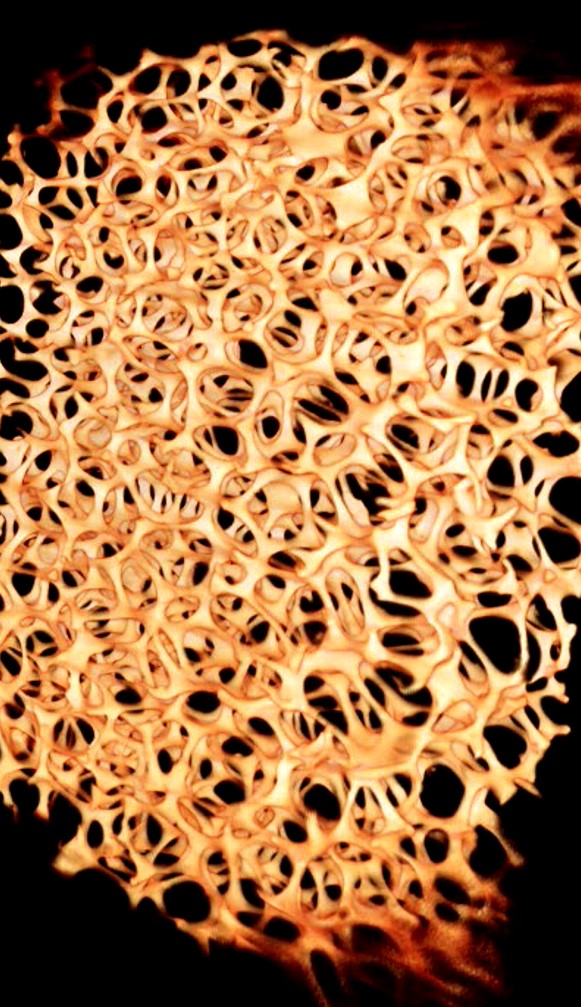Buildings—Reaching the boiling point
Researchers at Oak Ridge National Laboratory demonstrated that metal foam enhances the evaporation process in thermal conversion systems and enables the development of compact heating, ventilation and refrigeration, or HVAC&R, units. Compact and efficient HVAC&R equipment is needed to support the global industry transition to using alternative, environmentally friendly refrigerants. The team developed a small-scale evaporator to test the foam’s. The small-scale evaporator proved metal foam is well-suited for compact systems. “We found that the presence of a porous open cell or sponge-like metal foam layer in an evaporator’s tubes increases the liquid refrigerant’s boiling rate, creating essentially an enhanced pool-boiling process that can accommodate much higher heat fluxes compared to conventional technology,” ORNL’s Kashif Nawaz said. “Enhancement materials like metal foams increase equipment efficiency by improving the phase change or vaporization process.” [Contact: Jennifer Burke, (865) 576-3212; [email protected]]
Image: https://www.ornl.gov/sites/default/files/2019-10/Open_cell_metal_foam_ORNL.jpg
Caption: ORNL researchers discovered that open cell metal foams have complex cell structure and a large surface per unit volume, which enhance the pool-boiling process necessary for evaporation in HVAC&R units. They developed a small-scale evaporator to prove the foams could function well in complex systems. Credit: Kashif Nawaz/Oak Ridge National Laboratory, U.S Dept. of Energy
Video: https://youtu.be/9hrPyLgH8lg
Caption: A porous open cell or sponge-like metal foam layer in an evaporator’s tubes increases the liquid refrigerant’s boiling rate, creating an enhanced pool-boiling process that can accommodate much higher heat fluxes compared to conventional technology. Credit: Matthew Sandlin/Oak Ridge National Laboratory, U.S. Dept. of Energy
Tech transfer—Showcasing innovation
Researchers at Oak Ridge National Laboratory will present eight innovative technologies currently available for commercialization during a public event at ORNL on October 17. “From high-temperature alloys to drought-tolerant plant technology to safe impact resistant electrolytes, our scientists are bringing forth some of the most exciting inventions that could break out as tomorrow’s energy solutions,” said Michael Paulus, director of ORNL’s Technology Transfer Office. ORNL has invested approximately $1.5 million to prepare these technologies for commercialization under the lab’s Technology Innovation Program, or TIP. Additional funding may be available for further development in collaboration with a commercial partner. While the one-day showcase is open to the public, registration is required and seating is limited. Each available invention includes a technology summary and video, and some were developed using the lab’s world-class user facilities. Since 2012, TIP has invested more than $9 million in 39 projects, resulting in 28 license agreements and three options. [Contact: Sara Shoemaker, (865) 576-9219; [email protected]]
Image 1: https://www.ornl.gov/sites/default/files/2019-10/2018-P07771.jpg
Caption: At the 2018 Technology Innovation Showcase, ORNL’s Govindarajan Muralidharan described a low-cost, high strength alloy developed for high temperature applications. Credit: Carlos Jones/Oak Ridge National Laboratory, U.S. Dept. of Energy
Caption: Each technology presented at the 2019 Technology Innovation Showcase at ORNL shows promise as a breakthrough with significant commercial potential. Credit: Oak Ridge National Laboratory, U.S. Dept. of Energy
Neutrons—Insight into human tissue
Researchers used neutron scattering at Oak Ridge National Laboratory’s Spallation Neutron Source and High Flux Isotope Reactor to better understand how certain cells in human tissue bond together. They learned that specialized cell-to-cell adhesion complexes, known as adherens junctions, use flexible proteins to attach themselves to neighboring cells and build larger biological structures. “Neutrons gave us a clear picture of how these adherens junctions work together to create more complicated cell-to-cell interactions, which is crucial for everything from embryo development to wound healing,” said ORNL’s Shuo Qian. Published in PNAS, this research provides new insight into proteins involved in cancer and vascular disease, both of which have been linked to dysfunctional adherens junctions. Complementary measurements were made at SLAC National Accelerator Laboratory.—Gage Taylor [Contact: Jeremy Rumsey, (865) 576-2038; [email protected]]
Image: https://www.ornl.gov/sites/default/files/2019-10/19-G01222_StoryTip_proof1.png
Caption: As determined by small angle neutron scattering, this complex of proteins—alpha-catenin, shown in blue; beta-catenin, shown in purple; and E-cadherin, shown in yellow—is the central component of the adhesion junction, which transmits mechanical stress from cell to cell. Credit: Jill Hemman/Oak Ridge National Laboratory, U.S. Dept. of Energy
Fusion—Heating the core
In a recent study, researchers at Oak Ridge National Laboratory performed experiments in a prototype fusion reactor materials testing facility to develop a method that uses microwaves to raise the plasma’s temperature closer to the extreme values reached in a fusion energy reactor’s exhaust system. The test platform, known as Proto-MPEX (precursor to the future MPEX facility), creates a linear-shaped plasma suitable for testing novel metal alloys, materials that could protect the plasma-facing walls inside fusion reactors from high temperature plasmas that reach millions of degrees. “To deliver the high temperature needed to simulate fusion plasma—which comprises electrons and ions—we demonstrated a scheme that heated core electrons to produce high heat flux plasma onto a material target,” ORNL’s Ted Biewer said. This method, combined with other methods, applied to Proto-MPEX helps raise the plasma’s temperature to achieve heat fluxes approaching 10 megawatts per square meter, similar to what is expected in ITER, the International Tokamak Experimental Reactor.—Sara Shoemaker [Contact: Jason Ellis, (865) 241-5819; [email protected]]
Image: https://www.ornl.gov/sites/default/files/2019-10/laser_alignment_inside_proto-mpex_ornl.jpg
Caption: Scientists use a laser to align the plasma created at the Proto-MPEX machine at ORNL. Credit: Ted Biewer/Oak Ridge National Laboratory, U.S. Dept. of Energy
Video: https://youtu.be/Km9TDeVaky8
Caption: The linear-shaped plasma created in the Proto-MPEX machine at ORNL is suitable for testing novel metal alloys designed to protect the inside of fusion reactors that reach millions of degrees. Credit: Ted Biewer/Oak Ridge National Laboratory, U.S. Dept. of Energy
Original post https://alertarticles.info


